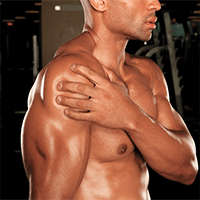 Don’t Put A Freeze On Your Weight Loss Goals!
Don’t Put A Freeze On Your Weight Loss Goals!
No matter what your fitness goals are, weight lifting related injuries are going to be common. However, a study done by the University Of Arkansas proved that there was 35 percent increase in gym injuries in recent years. There are many reasons as to why someone could be experiencing these injuries, whether it being you don’t know how to use the machine, using too much weight, lifting weights too fast and so many more. Keep on reading to find out which are the common injuries when it comes to lifting weights in the gym and how they can potentially effect your fitness goals.
As already mentioned, there are two main reasons for workout-related injuries as said by personal trainer Justin Price, MA. The first is being poor posture during the day, which eventually weakens your entire muscoskeletal structure and the other being that you’re lifting too fast, in both reps and weight. Its important to note that getting the body you dream of does not happen overnight, therefore, resulting in weight lifting related injuries. He recommends that if you’ve never worked out in an extreme regimen to consult a certified personal trainer.
What Are Some Weight Lifting Related Injuries?
There are five common weight lifting related injuries that can affect anyone and everyone. It all comes down to how conscious you are during your workouts.
- Neck
- Cause: If you typically sit with poor posture at work or anywhere else, that can lead to problems in the gym. If you use the bench press, this is when the trouble really starts. While lying on the bench press your back isn’t flush with the pad. It’s a lack of mobility and extension in your upper back will put stress on your lower neck and back.
- Prevention: If you are an avid user of the bench press, make sure your lower back and neck are supported properly. Avoid putting additional stress on your neck with exercises that cause you to raise your arms over your head, especially if you’ve just had a long day at work. Lastly, strengthen your mid and upper back and improve your posture by doing reverse shrugs. You’ll feel it in your lower traps, which will help you maintain your posture and health whether you’re at the office or at the gym.
- Shoulder
- Cause: When you’re at a computer all day, your arms have to internally rotate when you type, which puts pressure on the shoulders. You then go to the gym and do chest press, shoulder press, pushups, all also with your arms rotated in.
- Prevention: Make sure to externally rotate your arms to balance your shoulders. The best possible way to do this is with rowing with cables.
- Lower Back
- Cause: If you round your back throughout the day and then go to the gym and do an overhead should lift standing, your upper back will not extend properly. They straighten and arch upward from their lower back, which has a nervous breakdown.
- Prevention: It’s always important to stretch and strengthen your upper back to compensate for all the hunching you do at the office.
- Knees
- Cause: Because we don’t typically use our hip muscles during the day and our feet can often become unstable due to poor footwear and hip muscles aren’t strong the knees get all the stress. Leg extensions, curls, and presses don’t help resolve the problem because they don’t strength the muscles of the feet and hips.
- Prevention: The best possible exercise to avoid injuries to our knees would be lunges. This helps to stabilize your hips and knees.
- Foot & Ankles
- Cause: Most people spend their days in front of their computers with rounded shoulders. When you stand up, your weight falls to the front of your foot. With that misplaced center of gravity and put it into running shoes, which naturally tip you forward with a heel higher than the toe, and your feet and ankles start to bear the brunt of any impact.
- Prevention: Avoid running shoes with high heels, unless recommended by an expert. By helping spread the impact to the whole foot, you’ll prevent problems like plantar fascitis, achilles tendonitis, anterior compartment syndrome, lateral compression syndrome and bunions.
